Factsheet
Sustainability
The United Nations says that sustainability means “meeting the needs of the present, without compromising the ability of future generations to meet their own needs.” In other words, people living today shouldn’t use up the world’s resources so that there are none left for those who live after us.
What does it Mean to Live in a Sustainable way?
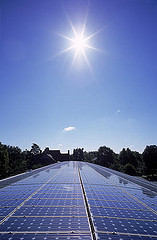
To sustain something simply means to keep it going. There are many people living on planet Earth - over 8 billion and counting! - and they all need certain things to survive. As a bare minimum, people need food, water and somewhere to live. All of these needs have to be met by the resources that are available on the planet. If we use up resources that can’t be replaced, or we carry out practices that harm the planet faster than it can recover, this is not sustainable.
When we talk about living in a sustainable way we are generally talking about developing ways to live that don’t harm the environment, or that cause the lowest possible impact on it. Living sustainably means that people try to manage their needs in a way that will allow future generations to do the same. Sustainable living means finding ways that we can make the planet’s resources last as long as possible, ideally forever.
Some of the planet’s resources are already running out or they are causing problems because there aren’t enough for everyone who wants them. These are the problems that living sustainably tries to improve.
‘Earth Overshoot Day’ is the date each year when humanity has used up all the resources (such as forests or fish) that it would be possible for Earth to regenerate in that same year. Ideally, we would be looking to last a whole year without reaching that date. In fact, in 2020, Earth Overshoot Day was August 22nd. That means that every day of 2020 after that date, people were using more than the planet could sustain. This was actually an improvement on 2019’s overshoot day (July 29th) as a result of the Covid-19 pandemic, which prevented human actions, such as travel for several months. By 2022, Earth Overshoot Day was back to 28th July. It isn’t possible to keep using resources like this forever. The world is currently using around one and three quarter Earth’s worth of resources a year - but we don’t have any more Earths!
Renewable Energy
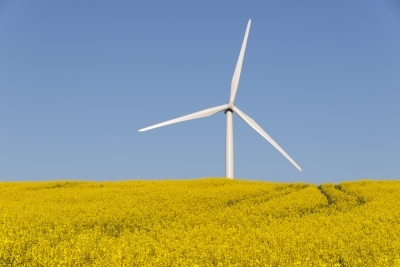 One of the biggest challenges for people to overcome in their aim to live sustainably is the issue of fossil fuels. Humans have become very reliant on using fossil fuels to generate electricity for our homes, schools and businesses and to power the vehicles that we rely on.
One of the biggest challenges for people to overcome in their aim to live sustainably is the issue of fossil fuels. Humans have become very reliant on using fossil fuels to generate electricity for our homes, schools and businesses and to power the vehicles that we rely on.
Coal, oil and natural gas are known as fossil fuels because they were created millions of years ago from the fossilised remains of organic material such as plants and animals. Over hundreds of millions of years, heat and pressure turned these remains into the coal, oil and gas that we use today. They took so long to form that they are a finite resource, meaning they will one day run out before there is time to replace them. Carbon dioxide and other harmful emissions are produced from burning fossil fuels and these are contributing to climate change. If we don’t stop burning these fuels, the damage caused will be irreversible.
Renewable energy sources seem to be the sustainable solution to this problem. By harnessing the power of the wind, waves, tides and sun, it is possible to generate power from sources that will not run out. Alternatives to fossilised crude oil also exist, such as vegetable oils grown from renewable crops.
Although these sources of energy are not without their own problems, they do promise a cleaner future for electricity generation as well as one that will last into the future. For more information about renewable energy sources, have a look at our lesson plans.
Eating More Sustainably
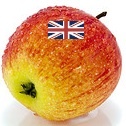
People’s food choices also have a huge impact on the planet. Livestock (animals farmed for food or cows used for dairy products) are the world’s largest users of land resources. Not only do the animals themselves need land to live on, but almost 80% of all the world’s agricultural land is used for growing feed for the animals. A growing demand for beef is the number one cause of deforestation in the world, as forests are cut down to make space for animal feed crops, like soy. Eating meat less frequently is one way people might choose to eat more sustainably.
Overfishing is the removal of a species of fish from any body of water at a rate that the species can’t replenish quickly, resulting in those species becoming depleted or very underpopulated in that particular area. Certain types of fishing, such as trawling, where huge nets are dragged along the ocean floor, can be especially harmful. Some forms of overfishing can upset entire ecosystems and the damage can be extremely difficult to undo. Look out for fish with the Marine Stewardship Council (MSC) logo, which shows that it has come from sustainable sources.
In the UK, people can choose from a wide range of foods. Shoppers expect to be able to buy food quite cheaply, so the people who are growing it may not always be paid very much for it. There is also a lot of demand for foods that are not grown locally, such as bananas and avocados. Lots of food for sale in the UK has been grown all over the world and transported to our country. The vehicles used to carry this food thousands of miles all emit even more harmful carbon dioxide into the atmosphere.
In order to produce as much food as possible to meet demand and to keep prices as low as possible, many farmers use methods of intensive farming, to keep yields high. This might include using chemical fertilisers and pesticides and not giving the soil in their fields long to recover from a harvest before planting another crop. This damages the nutrients in the soil over time. Currently, around 40% of the world’s agricultural land is seriously degraded, with some predictions suggesting that the planet will only be able to sustain another 60 harvests if farming methods remain the same. Although it is more expensive, organically grown food uses fewer harmful fertilisers and pesticides and is grown in a more sustainable way.
There is also the issue of the way that food is distributed around the planet. According to the UN, 820 million people don’t have enough to eat, which is around 1 in every nine people in the world. Another 1.3 billion people don’t have access to enough nutritious food, so they don’t get a balanced, healthy diet. At the same time, one third of food produced for humans (around 1.3 billion tons) gets wasted every year. Choosing more locally grown produce helps to reduce the number of ‘food miles’ that your meals have travelled. It’s also important not to waste food. Planning meals can help cut down on waste and composting food scraps prevents them from ending up in landfill.
Wasting Less Water
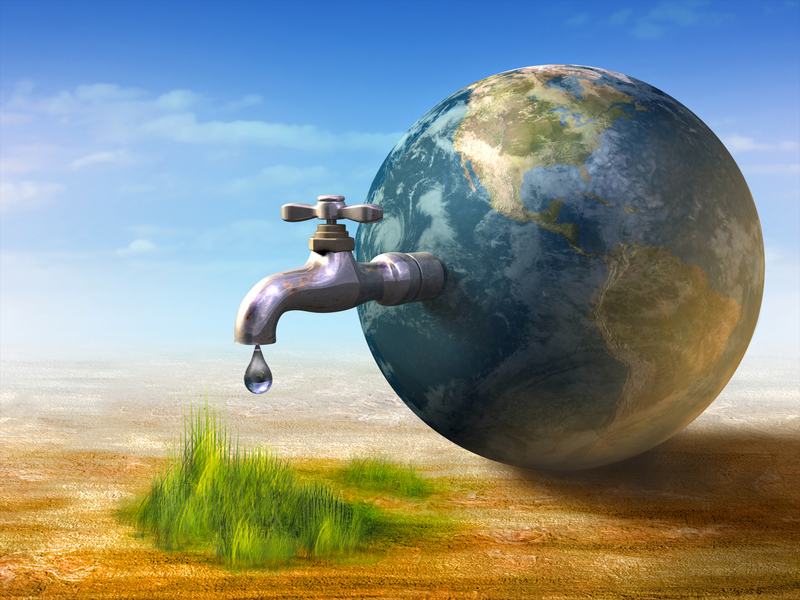 In order to live sustainably, everyone needs access to clean drinking water. In the UK, people are very used to turning on a tap every time they want fresh water. There is so much clean water that people use it to take showers and baths, to wash their clothes, water their gardens and even flush their toilets. Richer nations use huge amounts more water than those living in developing countries. The average American uses around 575 litres of water per day, and Europeans get through 150 litres per day. Not everyone has such ready access to clean drinking water. More than a billion people in developing countries have to make do with fewer than 19 litres of water each, in some cases a lot less (e.g. 5-10 litres per person per day in Ethiopia).
In order to live sustainably, everyone needs access to clean drinking water. In the UK, people are very used to turning on a tap every time they want fresh water. There is so much clean water that people use it to take showers and baths, to wash their clothes, water their gardens and even flush their toilets. Richer nations use huge amounts more water than those living in developing countries. The average American uses around 575 litres of water per day, and Europeans get through 150 litres per day. Not everyone has such ready access to clean drinking water. More than a billion people in developing countries have to make do with fewer than 19 litres of water each, in some cases a lot less (e.g. 5-10 litres per person per day in Ethiopia).
Many people globally suffer when extreme weather conditions cause droughts. In 1995, the UN predicted that half a billion people would be living in water-scarce or water-stressed areas by 2050. By 2005, the organisation revised that prediction to 4 billion people. The 2018 edition of the United Nations World Water Development Report stated that nearly 6 billion people will suffer from clean water scarcity by 2050.
It is important for those people who have access to plenty of clean water, not to waste it. Treating the water that people flush down the drain so that it is clean enough to be pumped back through our taps takes a huge amount of energy. Fixing leaks, turning off the tap whilst brushing your teeth and taking shorter showers can all help to make a small difference at home.
Reduce, re-use, recycle
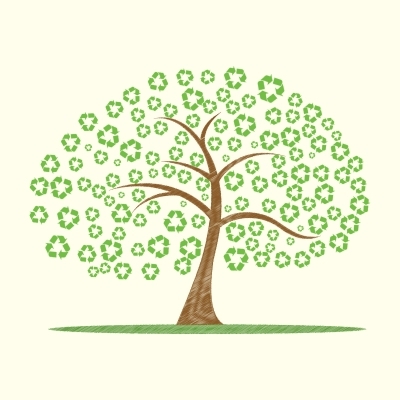 When thinking of ways to live more sustainably, it can be helpful to think about the following ‘Three Rs’: Reduce, re-use and recycle.
When thinking of ways to live more sustainably, it can be helpful to think about the following ‘Three Rs’: Reduce, re-use and recycle.
Reducing the amount of resources that we use is the most beneficial thing that people can do. That might mean buying fewer new things, from clothes to technological products such as computers or phones. This, in turn, reduces the resources used to make these products as well as reducing the energy needed to transport them around the globe. People might also consider reducing the amount of waste that they throw away, reducing the number of miles that their food has travelled or reducing the amount of water that they use each day.
Re-using products is really another way to reduce the number of new things that people buy. Instead of throwing something away when it is no longer wanted, people might consider passing it along to someone else who can use it. Rather than buying the latest new technology, people might consider using something for far longer, or learning to fix things that break to extend their useful life.
Finally, when getting rid of items that are no longer needed, people can try to make sure that the parts are recycled, meaning that any useful resources are able to be used again. All sorts of household items can be recycled nowadays as well as much of the packaging that our food and other products come in. By choosing to recycle, waste can be kept from land fill and useful resources can be given a new lease of life.
For further information on Sustainable Living, have a look at our lesson plans.
.
Credits
Image: Sustainability by Sam Howzit
www.overshootday.org
National Geographic, (January 2019), Renewable Energy Explained, by Christina Nunez, (Online), Available from: https://www.nationalgeographic.com/environment/energy/reference/renewable-energy/ [Accessed on 3/2/21]
World Wildlife Fund, (2021), 10 Tips For Eating For The Planet, (Online), Available from: https://www.wwf.org.uk/what-can-i-do/10-tips-help-you-eat-more-sustainably [Accessed on 3/2/21]
Sustainable Food Trust, (2021), How to Eat Sustaiably, (Online), Available from: https://sustainablefoodtrust.org/key-issues/sustainable-healthy-diets/how-to-eat-sustainably/ [Accessed on 3/2/21]
Waste not, Want not
As well as thinking about the things that people consume, living more sustainably also means thinking about what to do with the rubbish that humans create. By 2050, the world is expected to generate 3.4 billion tons of waste annually, a dramatic increase from today’s already huge 2.01 billion tons. Much of this waste ends up in landfill sites, huge rubbish tips buried in the ground, or in rubbish tips and sitting on the surface. Landfill sites cause many problems. Not only are they ugly and smelly for people who live and work on them, they contribute to climate change. As organic materials such as food scraps break down in a landfill, they release methane into the atmosphere. Methane from landfill sites account for 12% of total global methane emissions and almost 5% of total greenhouse gas emissions.
We still don’t even fully understand the risks that all this rubbish might be creating for future generations. Waste such as plastic creates toxins (poisonous substances) as it breaks down and these seep into the soil and waterways over time. Because plastic has only been around for a relatively short time, and because it can take many hundreds of years to break down, we have no evidence yet for the harm that it could cause to the environment.
Every year over 8 million tons of plastic ends up in the sea. It gets mistaken for food by birds, turtles, whales and other marine life and it piles up on our shorelines. Yet the piles of plastic that we see account for less than 1% of the plastic that is actually in the oceans. Much of this is now in tiny pieces, known as microplastic, with some trapped deep on the ocean floor and some forming clouds of tiny particles in the water. And a 2017 research paper predicted that 196 million tons of plastic may have settled from the surface into the deep ocean since 1950.
Continuing to produce this much waste and to dispose of it in the same ways is not sustainable. Investigations are being done into finding different packaging materials that are biodegradable, meaning they break down naturally without releasing harmful pollutants. It is also possible that there are some types of worms and fungi that might be able to process waste such as plastics in the future. Meanwhile, it is important for everyone to try to throw less away!


 One of the biggest challenges for people to overcome in their aim to live sustainably is the issue of fossil fuels. Humans have become very reliant on using fossil fuels to generate electricity for our homes, schools and businesses and to power the vehicles that we rely on.
One of the biggest challenges for people to overcome in their aim to live sustainably is the issue of fossil fuels. Humans have become very reliant on using fossil fuels to generate electricity for our homes, schools and businesses and to power the vehicles that we rely on.
 In order to live sustainably, everyone needs access to clean drinking water. In the UK, people are very used to turning on a tap every time they want fresh water. There is so much clean water that people use it to take showers and baths, to wash their clothes, water their gardens and even flush their toilets. Richer nations use huge amounts more water than those living in developing countries. The average American uses around 575 litres of water per day, and Europeans get through 150 litres per day. Not everyone has such ready access to clean drinking water. More than a billion people in developing countries have to make do with fewer than 19 litres of water each, in some cases a lot less (e.g. 5-10 litres per person per day in Ethiopia).
In order to live sustainably, everyone needs access to clean drinking water. In the UK, people are very used to turning on a tap every time they want fresh water. There is so much clean water that people use it to take showers and baths, to wash their clothes, water their gardens and even flush their toilets. Richer nations use huge amounts more water than those living in developing countries. The average American uses around 575 litres of water per day, and Europeans get through 150 litres per day. Not everyone has such ready access to clean drinking water. More than a billion people in developing countries have to make do with fewer than 19 litres of water each, in some cases a lot less (e.g. 5-10 litres per person per day in Ethiopia).  When thinking of ways to live more sustainably, it can be helpful to think about the following ‘Three Rs’: Reduce, re-use and recycle.
When thinking of ways to live more sustainably, it can be helpful to think about the following ‘Three Rs’: Reduce, re-use and recycle.